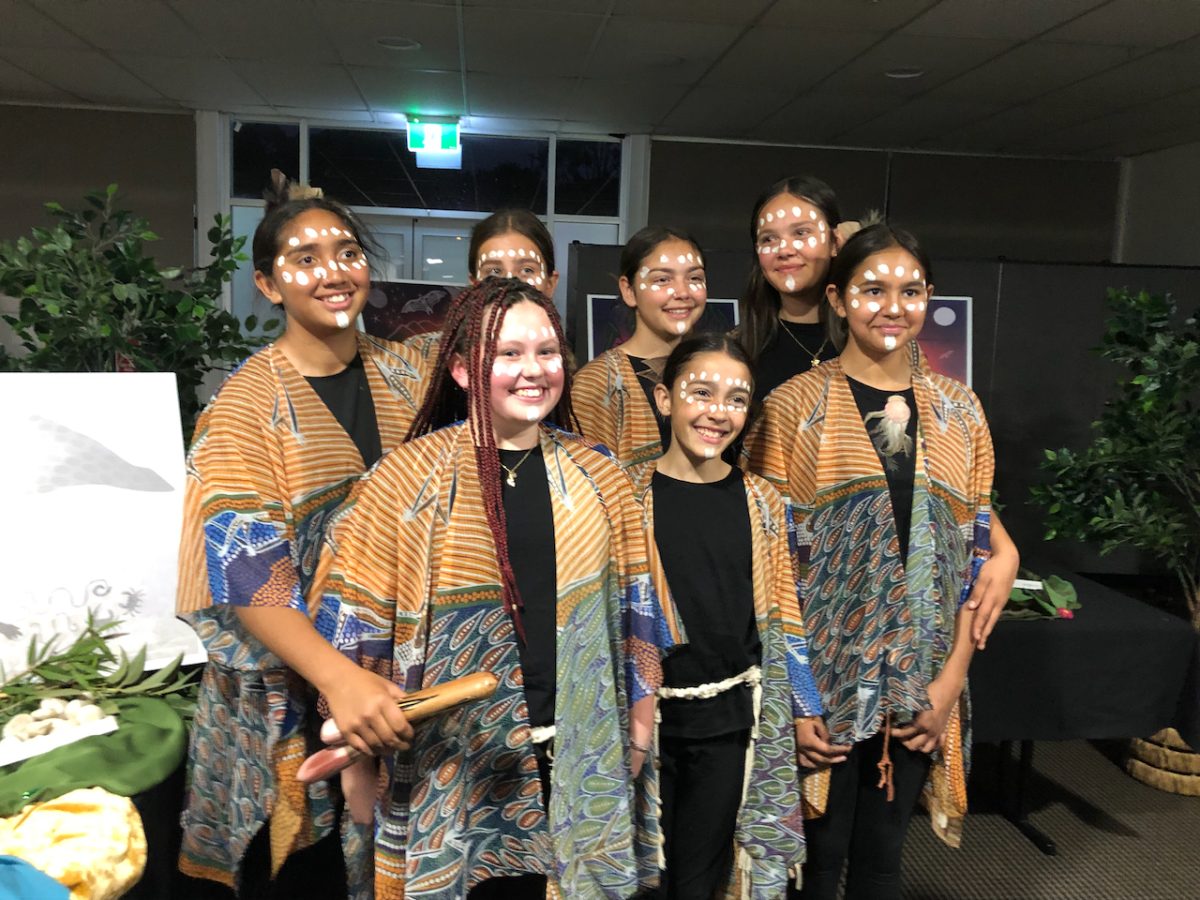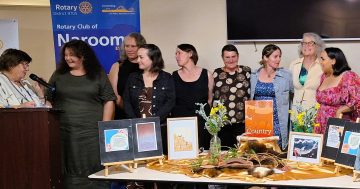
Cultural dancers from Narooma High School performed at the launch event of Narooma Preschool’s cultural education resource. Photos: Marion Williams.
This year Aboriginal cultural content became mandatory in NSW preschool curriculums. Rather than buying something, Narooma Preschool wanted something that was authentic and respectful within its community context.
It has taken 15 months and input from many different parts of the community to create engaging and meaningful material. The preschool is now sharing it with 20 other early learning services across the Eurobodalla so they have a locally relevant language and culture teaching tool.
Aboriginal cultural material has long featured in the Department of Education’s early childhood framework. In 2022, it became a principle and preschools were told that content with an Aboriginal and Torres Strait Islander perspective would become mandatory in 2024.
There are off-the-shelf oral language and literacy programs but Narooma Preschool director and nominated supervisor Kathy Phipps did not want a standard package.
“We had to provide true historical and cultural learning experiences for all children that were respectful within our community context,” she said. “It had to be authentic and I couldn’t find anything Yuin-based.”

One of the storyboards painted by local Yuin artist Natalie Bateman for Narooma Preschool.
In May 2023, with grant funding from the Commonwealth Department of Infrastructure, Transport, Regional Development, Communications and the Arts, Ms Phipps and her colleague Kate Heffernan began building their own program. They had some starting points.
“We made a preschool song two years ago and the children really enjoyed it,” Ms Phipps said.
The preschool had long used three Aboriginal authors’ books – Mad Magpie, The Toast Tree and A Home for Bilby – which the kids loved. To those, Ms Phipps wanted to add five Dreamtime stories.
The project needed permission from a knowledge holder so Ms Phipps met with teachers Patricia Ellis OAM and Kerry Boyenga. The sisters, with their brother Waine Donovan, wrote the Dhurga Dictionary and Learners’ Grammar Book. Not only did the teachers give their blessing, but they became an integral part of the project.
Pictures are critical to storytelling to young children so Ms Phipps approached local Yuin artist Natalie Bateman to make storyboards.

Some of the artefacts made by Yuin craftsman Eddie Moore and the Gadhu craft girls.
“One storyboard has a photograph of Barunguba Montague Island and another has a photograph from the bushfires and artwork was layered over the top of them,” Ms Phipps said. “They can be interactive with other stories. They are an amazing gift to our community of educators, children and families.”
Meanwhile, staff members took a language course at TAFE, committing two hours every Monday for six months on top of their workloads. All staff are now confident teaching Dhurga language.
There was grant money to pay for the course but, in another community contribution, TAFE waived the fees for them.
Ms Phipps wanted props, too, to help tell the story.
“The children need pictures but also things to hang onto. We got the Narooma Men’s Shed to make wooden animals for us and one of our Yuin educators, Talia, made patterns which the Men’s Shed etched onto the timber.”

Some of the props made by Narooma Men’s Shed members. They etched the wooden shapes with patterns made by Narooma Preschool educator Talia Moreton-Stewart. In the background are the baskets that Narooma Preschool gifted to other early learning services.
Next on the list were artefacts. Ms Phipps asked local Yuin craftsman Eddie Moore for help. He and the Gadhu craft girls made spears, boomerangs and coolamons and other artefacts for the children to see, touch, interact with and have conversations about.
Ms Phipps used the grant money to make 20 baskets and filled each one with the storyboards, props and artefacts. They gifted these to Eurobodalla’s other early learning services at a launch event in Narooma on Thursday, 29 August.
They are also gifting the services a cultural tour with Ms Ellis.
“We found a lot of educators are struggling with making a connection with culture, elders and knowledge holders in the local area,” Ms Phipps said.
The grant paid for those resources, while Ms Phipps’s staff will generously be going into the other early learning services to support them to implement the resources.
During the project, the preschool became involved with Narooma High School, which has a native bush and medicinal herb garden. The two groups now have a memorandum of understanding.

Two of the storyboards created for Narooma Preschool by local Yuin artist Natalie Bateman.
“The grant has opened doors,” Ms Phipps said. “People are beginning to understand language and culture, and it is bringing people together.”
She said while adult conversations may be about land rights and other critical points of view, children were interested in being connected with each other.
“Language connects us to culture. For each of us, language provides us with our identity and connects us to culture and to Country.
“That is why the traditional stories are so important. By having photographs from today, overlaying the traditional stories brings something from the past into the present and the future. That is what language and culture do for all our children in our local context.”







